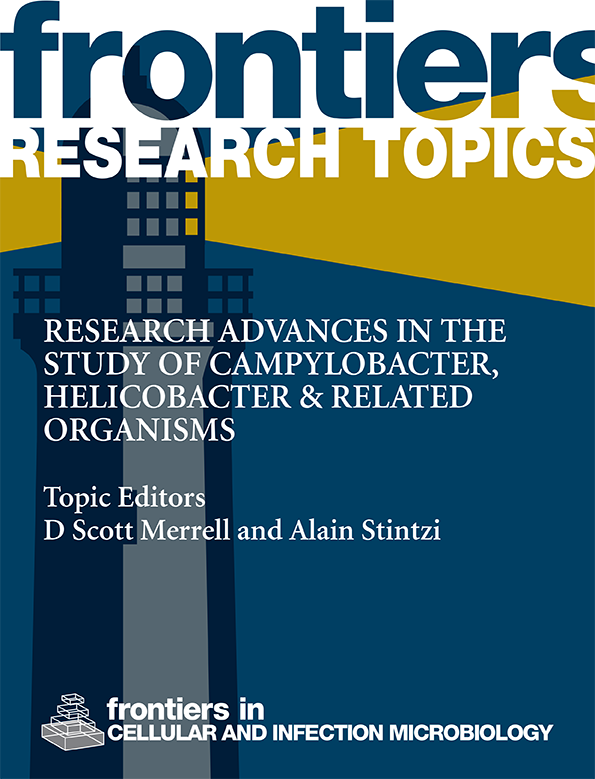Microbiome of diseased and healthy implants—a comprehensive microbial data analysis
IF 4.6
2区 医学
Q2 IMMUNOLOGY
Frontiers in Cellular and Infection Microbiology
Pub Date : 2024-08-29
DOI:10.3389/fcimb.2024.1445751
引用次数: 0
Abstract
ObjectiveThe purpose of this systematic bioinformatics analysis was to describe the compositions and differences in submucosal microbial profiles of peri-implants’ diseases and healthy implant.Material and methodsPubMed, Embase, ETH Z, Scopus, CNKI, and Wanfang databases were searched to screen relevant literature on the analysis of peri-implant microflora based on the sequencing analysis technique of 16S ribosomal RNA (16S rRNA) gene. High-throughput sequencing of the 16S rRNA gene of microorganisms from healthy implants, peri-implant mucositis, and peri-implantitis was downloaded from the screened articles. EasyAmplicon and Usearch global algorithm were used to match the reads from each dataset to a full length of 16S rRNA or ITS gene sequence. The microorganisms based on the Human Oral Microbiome Database (HOMD) were re-classified, and the microbial diversity, flora composition, and differential species of the samples were re-analyzed, including taxonomic classification and alpha and beta diversity calculations. The co-occurrence network was also re-analyzed.ResultsA total of seven articles with 240 implants were included. Among them, 51 were healthy implants (HI), 43 were in the peri-implant mucositis (PM) group, and 146 were in the peri-implantitis (PI) group. A total of 26,483 OTUs were obtained, and 877 microorganisms were annotated. The alpha diversity including Chao1 (healthy implants, 121.04 ± 92.76; peri-implant mucositis, 128.21 ± 66.77; peri-implantitis, 131.15 ± 84.69) and Shannon (healthy implants, 3.25 ± 0.65; peri-implant mucositis, 3.73 ± 0.61; peri-implantitis, 3.53 ± 0.67) of the samples from the three groups showed a significant difference. The beta diversity of the three samples was statistically different among groups. The genera of病变和健康植入物的微生物组--微生物数据综合分析
材料和方法检索PubMed、Embase、ETH Z、Scopus、CNKI和万方数据库,根据16S核糖体RNA(16S rRNA)基因测序分析技术筛选种植体周围微生物谱分析的相关文献。从筛选出的文章中下载了健康种植体、种植体周围粘膜炎和种植体周围炎微生物的 16S rRNA 基因高通量测序结果。使用 EasyAmplicon 和 Usearch 全局算法将每个数据集的读数与全长 16S rRNA 或 ITS 基因序列进行匹配。根据人类口腔微生物组数据库(HOMD)对微生物进行了重新分类,并对样本的微生物多样性、菌群组成和差异物种进行了重新分析,包括分类学分类、α和β多样性计算。结果 共收录了 7 篇文章,240 个种植体。其中,健康种植体(HI)51 例,种植体周围粘膜炎(PM)43 例,种植体周围炎(PI)146 例。共获得 26,483 个 OTUs,并对 877 个微生物进行了注释。三组样本的α多样性包括Chao1(健康种植体,121.04 ± 92.76;种植体周围粘膜炎,128.21 ± 66.77;种植体周围炎,131.15 ± 84.69)和Shannon(健康种植体,3.25 ± 0.65;种植体周围粘膜炎,3.73 ± 0.61;种植体周围炎,3.53 ± 0.67),显示出显著差异。三组样本的贝塔多样性在统计学上存在差异。Treponema 属和 Fretibacterium 属在 PI 组的含量明显高于其他两组,而链球菌属在 HI 组的含量更高。卟啉单胞菌在种植体周围炎组的相对含量为 6.1%。共现网络的结果显示,三组样本的网络拓扑结构存在差异。健康种植体中连接最多的三个菌属是卤单胞菌、镰刀菌和弗氏菌。在种植体周围粘膜炎中,连接最多的三个菌属是阿利斯蒂普斯菌属、UCG-014梭状芽孢杆菌属和酵母菌属。在种植体周围炎中联系最紧密的三个属是Lachnoanaerobaculum、Fusobacterium和Atopobium。牙龈卟吩菌(红色复合菌)在 PI 组(7 900 个)的连接度高于 HI 组(23 个)。与健康种植体相比,种植体周围炎的粘膜下微生物群落具有物种丰富度高、多样性强的特点;与健康种植体相比,种植体周围炎组和种植体周围粘膜炎组的红色复合菌群、黄色复合菌群的部分成员以及一些新型牙周病原体的相对丰富度更高。健康种植体、种植体周围粘膜炎和种植体周围炎共存网络的核心菌群差异很大。种植体周围炎部位的微生物群落相对不平衡,卟啉单胞菌可能在共生网络中扮演重要角色。
本文章由计算机程序翻译,如有差异,请以英文原文为准。
求助全文
约1分钟内获得全文
求助全文
来源期刊

Frontiers in Cellular and Infection Microbiology
IMMUNOLOGY-MICROBIOLOGY
CiteScore
7.90
自引率
7.00%
发文量
1817
审稿时长
14 weeks
期刊介绍:
Frontiers in Cellular and Infection Microbiology is a leading specialty journal, publishing rigorously peer-reviewed research across all pathogenic microorganisms and their interaction with their hosts. Chief Editor Yousef Abu Kwaik, University of Louisville is supported by an outstanding Editorial Board of international experts. This multidisciplinary open-access journal is at the forefront of disseminating and communicating scientific knowledge and impactful discoveries to researchers, academics, clinicians and the public worldwide.
Frontiers in Cellular and Infection Microbiology includes research on bacteria, fungi, parasites, viruses, endosymbionts, prions and all microbial pathogens as well as the microbiota and its effect on health and disease in various hosts. The research approaches include molecular microbiology, cellular microbiology, gene regulation, proteomics, signal transduction, pathogenic evolution, genomics, structural biology, and virulence factors as well as model hosts. Areas of research to counteract infectious agents by the host include the host innate and adaptive immune responses as well as metabolic restrictions to various pathogenic microorganisms, vaccine design and development against various pathogenic microorganisms, and the mechanisms of antibiotic resistance and its countermeasures.
 求助内容:
求助内容: 应助结果提醒方式:
应助结果提醒方式:


